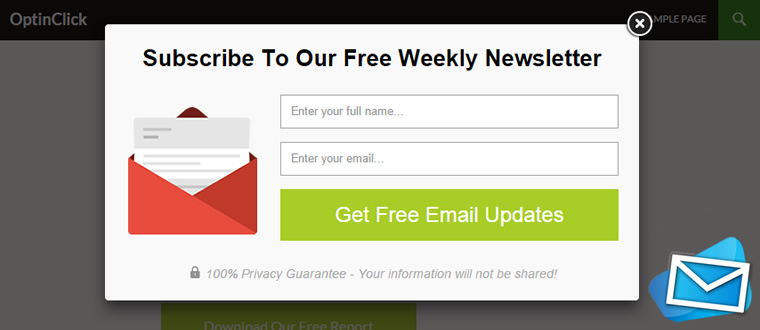
What is Long Form Content and Why Your Business Needs It
What is long-form content, and why should small business owners and solopreneurs prioritize it in their marketing strategies? In today’s digital climate, with attention spans seemingly at an all-time low, devoting resources to generating extended content may seem counterintuitive. However, this type of written material offers numerous benefits that can elevate your brand’s online presence.
In this blog post, we will explore the importance of long-form content for SEO purposes – how it can lead to higher rankings on search engine results pages (SERPs) and improve your brand’s authority. We’ll also discuss practical tips for crafting effective long-form articles with clear structure and strategic visuals. If you’ve never had to write long-form content, it’s not that much different than writing short-form content. You’re simply writing in-depth content on a particular subject, instead of covering it topically in a short article length.
In fact, with the growing use of AI-generated content and AI ideation, writing long-form content is easier to do than before. It cuts down on the time spent writing first drafts and including relevant keywords in your content. But, keep in mind that merely creating content with AI without editing, fact-checking, or reviewing the content is dangerous to your website ranking and SEO. Not to mention, savvy readers can identify AI-generated content easier, especially if it provides no depth.

Beyond publishing long-form content or text-based pieces, we’ll delve into various formats such as case studies or annual reports that can be incorporated into a comprehensive content strategy. Additionally, you’ll learn how to expand existing short-form pieces into more extensive works while maintaining value through detailed research and analysis. Finally, we’ll touch upon leveraging video series or podcast episodes as part of a well-rounded approach to delivering valuable information to your audience.
By understanding what is long form content and implementing these insights effectively within your marketing efforts, you can enhance user engagement while positioning yourself as an industry leader.
Table of Contents:
- The Importance of Long-Form Content in SEO
- Creating Effective Long-Form Content
- Maximizing the Impact of Your Long Form Content
- Types and Formats for Long Form Content Strategy
- Expanding Shorter Pieces Into Long-Form Content
- Long-Form Video and Podcast Content
- FAQs in Relation to What is Long Form Content
- Conclusion
The Importance of Long-Form Content in SEO
Long-form content, which typically exceeds 1,000 words, is becoming increasingly significant in the world of SEO and digital marketing. Search engines tend to favor longer articles when ranking results; for instance, Backlinko discovered that the average first-page result contains 1,447 words. This type of content not only performs better on search engines, but also helps build a website’s reputation.
Higher Rankings on Search Engine Results Pages (SERPs)
A well-researched and comprehensive long-form article can improve your chances of achieving higher rankings on SERPs. As search engines prioritize user experience and value-rich information, they often reward websites with extensive and informative content by placing them higher in their organic listings.

Improved Online Authority for Your Brand
Beyond its impact on SEO performance, long-form content serves as an excellent tool for establishing your brand as an industry expert or thought leader. By providing detailed insights into relevant topics within your niche market or field of expertise, you demonstrate both knowledgeability and credibility to potential customers who are seeking reliable sources for guidance.
Investing time and effort into crafting high-quality long-form pieces is essential for leveraging the advantages of content marketing to boost visibility, build trust, and drive conversions. Not only will this approach help boost visibility through improved SERP standings but also foster trust among readers who appreciate thorough analysis backed by solid research, driving more conversions from your target audience.
Creating lengthy content is essential for SEO success, as it can boost visibility and strengthen your brand’s web presence. Crafting effective long-form content requires strategic use of visuals, headings, and subheadings to maximize engagement with readers.
Boost your SEO rankings and establish authority in your industry with long-form content. Learn why it's a must-have for any successful content marketing strategy. #longformcontent #SEO #digitalmarketing Share on XCreating Effective Long-Form Content
To achieve success with long-form content, it’s essential to keep your paragraphs short and use headers to guide readers through the main ideas. Whenever you create content, whether long or short, every paragraph should be meaningful. Sections must end by emphasizing why readers should care about what was just discussed. Incorporating eye-catching visuals can help maintain reader interest throughout your piece.
Structuring Your Content with Clear Headings and Subheadings
A well-structured article is easier for both search engines and human readers to understand. Break down complex topics into smaller sections using headings (like <h2>) and subheadings (such as <h3>). This approach makes it simpler for users to navigate your content while also signaling its organization to search engine crawlers.
Using Visuals Strategically to Enhance Engagement
Incorporating relevant images, infographics, or videos within your long-form articles not only breaks up large blocks of text, but also helps illustrate key points more effectively. When selecting visuals, ensure they are high-quality and support the topic at hand. You can find royalty-free images on websites like Unsplash, or create custom graphics using tools such as Canva.

Another idea is to push the envelope and use AI art tools like Midjourney to create unique images that enhance your long-form articles. Certainly, there is a learning curve with art imaging programs, and some of the images may return with obscure results. However, if you take some time in learning the basics, you can create relevant images that will help your in-depth content rank.
- Tip: Use descriptive file names for your images (e.g., “seo-strategies.jpg”) instead of generic ones (“image1.jpg”). This practice improves image SEO by providing context about their contents.
- Note: Always include an appropriate alt attribute (
<img src="image.jpg" alt="Description of the image">) for your images, as this helps search engines understand their content and improves accessibility for users with visual impairments.
Crafting powerful long-form content is an indispensable component of any successful advertising plan. Using the right combination of structure, visuals, and narrative techniques, you can amplify your content’s reach to a broader audience. Next up: maximizing the impact of your long form content through cross-promotion and tapping into emotions as part of storytelling.
Boost your content marketing game with effective long-form pieces. Keep it structured, use visuals strategically and engage readers from start to finish. #ContentMarketingTips #LongFormContent Share on XMaximizing the Impact of Your Long-Form Content
To maximize the reach of your long-form content, effective promotion across various channels is key. This helps you reach a wider audience and increases engagement with your target market. Let’s discuss some strategies for maximizing the impact of your long-form pieces.
Cross-promoting via Social Media Platforms
Sharing your content on multiple social media platforms is crucial in getting more eyes on it. For instance, create a carousel post on Instagram, an engaging Twitter thread, or even a short LinkedIn video that highlights key points from your article. By tailoring how you share each piece based on platform-specific best practices, you can drive traffic back to your website and increase overall visibility.
Tapping into Emotions as Part of Storytelling
Focusing on emotion when crafting long-form content can help forge deeper connections with readers without necessarily selling products directly. Incorporate personal anecdotes or real-life examples that resonate with people’s experiences and emotions – this will make them more likely to engage with and share what they’ve read. A notable example would be The New York Times’ Modern Love column, which has garnered immense popularity due to its relatable storytelling approach.
- Actionable tip: Use tools like CoSchedule’s Headline Analyzer to craft emotionally driven headlines that grab attention immediately.
- Actionable tip: Encourage user-generated content by inviting readers to share their own stories or experiences related to your topic. This can help create a sense of community and foster loyalty among your audience.
By utilizing these approaches, you can amplify the effectiveness of your lengthy content, leading to higher involvement and better web prominence for your organization.
Additionally, using the right types and formats of long form content, you can maximize its impact on your audience. Considering the potential benefits of using appropriate types and formats for long-form content, let us explore some strategies that can be employed to ensure success.
Types and Formats for Long Form Content Strategy
When developing a long-form content strategy, utilizing multiple formats is essential to capture the attention of your audience and provide them with useful information. By utilizing different types of content, you can effectively engage your audience and provide them with valuable information that resonates.
Case studies highlighting real-life examples and success stories
Case studies are an excellent way to demonstrate the effectiveness of your products or services by sharing real-life examples. These in-depth analyses not only offer insights into how your offerings have helped others but also serve as powerful testimonials for potential customers. To create compelling case studies, focus on telling a story that highlights challenges faced by clients and how your solutions contributed to their success.
Milestones or annual reports highlighting achievements
In addition to case studies, milestones or annual reports can be used as part of your long-form content strategy. These pieces showcase significant accomplishments over time, providing readers with tangible evidence of progress made within your organization or industry sector. When crafting these documents, emphasize key performance indicators (KPIs) relevant to stakeholders while maintaining transparency about areas needing improvement.
To help you format visually stunning case studies and milestone reports while receiving constructive feedback on improving engagement levels further, Bramework blog builder is an invaluable tool worth exploring.
Beyond written materials like articles and whitepapers, don’t forget about other forms such as videos (e.g., YouTube, webinars), podcasts (e.g., interviews), infographics, and slide presentations. These formats cater to different learning preferences while ensuring your content remains fresh and diverse.
Remember that the key to a successful long-form content strategy lies in providing value through engaging, informative, and original material tailored specifically for your target audience. Long-form content strategy also involves utilizing various types and formats to produce informative and captivating content.
To further enhance the effectiveness of this approach, it’s essential to explore methods of transforming shorter pieces into longer, more comprehensive works.
Boost your business with a killer long-form content strategy. Learn how to engage and inform your audience with case studies, reports, videos & more #marketingtips #smallbusinessowner Share on XExpanding Shorter Pieces into Long-Form Content
To maximize SEO impact, you can take short content and expand it into long-form pieces by providing more in-depth information, analysis, or solutions to the topic at hand. This approach not only helps improve search engine rankings but also offers a comprehensive insight into specific subjects.
Identifying Opportunities for Expansion Within Existing Content
Review existing content to pinpoint opportunities for further exploration into related topics that could benefit from more detail or have resonated with readers. Look for topics that have gained traction with your audience or could benefit from additional context and explanation. For example, if you’ve written a brief post about SEO best practices, consider expanding on each practice with detailed examples and actionable tips.
It’s important to remember that not every section or article needs to be expanded. Adding unnecessary content can detract from the overall quality of the piece. For example, a topic as simple as tying shoelaces doesn’t require an extensive 2000-word article. It’s best to keep it concise and straightforward with a brief answer.
Ensuring Value Addition Through Detailed Research and Analysis
Incorporating thorough research is crucial when transforming shorter pieces into long-form content. Utilize reputable sources such as industry reports, expert opinions, or case studies to support your claims while offering fresh perspectives on the topic. For instance, if you’re discussing social media marketing strategies in an expanded article, refer to successful campaigns like these top examples from Social Media Examiner.
- Gather data: Use tools like Google Analytics or AHREFs to collect relevant data points that will help strengthen your arguments.
- Analyze trends: Identify patterns within collected data that can be used as evidence supporting your ideas.
- Create visuals: Incorporate charts or infographics to illustrate complex concepts effectively.
By expanding your short content into long-form pieces, you can enhance your SEO strategy while providing valuable insights to your audience. What’s more, small business owners can gain greater visibility and establish their authority in their industry. Remember to identify opportunities for expansion within existing content and ensure value addition through detailed research and analysis.
Moving forward, we will discuss how to create compelling video series for your audience and produce informative podcast episodes as part of your strategy.
Transform your short content into comprehensive long-form pieces with these tips. Enhance your SEO strategy and provide valuable insights to your audience. #contentmarketing #SEOtips Share on XLong-Form Video and Podcast Content
Although typically associated with written material, long-form content also encompasses videos and podcasts lasting over 10 minutes with a clear beginning-middle-end structure. The choice between text or video depends entirely on search intent; when delivering engaging experiences requires visual aids, video reigns supreme.
Creating Compelling Video Series for Your Audience
To create an effective long-form video series, start by identifying your target audience’s needs and interests. Next, develop a storyline that addresses these topics in-depth while keeping viewers engaged throughout the entire duration of each episode. Consider incorporating high-quality visuals, animations, interviews with experts, or testimonials from satisfied customers to enhance the overall viewing experience. Additionally, make sure to optimize your videos for SEO by including relevant keywords in titles, descriptions, and tags.
Producing Informative Podcast Episodes as Part of Your Strategy
In addition to video content, producing podcast episodes can be another excellent way to showcase your expertise within your industry while providing valuable information for listeners who prefer audio formats over text-based articles or videos. To create successful podcast episodes:
- Select topics that are both interesting and relevant to your audience.
- Create detailed outlines covering key points you want to discuss during each episode.
- Invite knowledgeable guests who can provide unique insights into specific subjects.
- Edit episodes carefully ensuring smooth transitions between segments while eliminating unnecessary pauses or filler words.
- Promote new episodes across various social media platforms using eye-catching graphics and compelling captions.
By utilizing longer-form video and audio material within your promotional plan, you can create a connection with an expansive crowd while exhibiting yourself as an expert in your field.
Maximize your reach and establish authority in your niche with long-form video and podcast content. Engage your audience and showcase expertise. #marketingtips #contentstrategy Share on XLong-form content is an essential component of any successful marketing strategy. Creating in-depth, valuable pieces that are beneficial to your target audience can aid in increasing your search engine visibility and establish you as a leading expert within the field. Structuring your content with clear headings and subheadings, using visuals strategically, cross-promoting via social media platforms, and tapping into emotions as part of storytelling are all effective ways to maximize the impact of your long-form content.
If you want to learn more about how to market yourself effectively online, then sign up for our newsletter.
FAQs in Relation to What is Long Form Content
What is long-form content?
Long-form content refers to comprehensive, in-depth articles or multimedia pieces that provide extensive information on a specific topic. These types of content typically exceed 1,200 words and are designed to offer valuable insights, engage readers for longer periods, and improve search engine rankings.
What is considered a long-form article?
A long-form article is an informative piece of written content that delves deeply into its subject matter. It usually consists of more than 1,200 words and features detailed research, analysis, expert opinions, or interviews. Long-form articles aim to provide thorough understanding while establishing the author’s credibility and expertise.
What is an example of long-form content?
Examples of long-form content include case studies displaying real-life examples and success stories; milestones or annual reports highlighting achievements; in-depth guides offering step-by-step instructions; whitepapers presenting original research findings; eBooks providing comprehensive knowledge on various topics; video series targeting audience interests.
What are long-form articles for SEO?
Long-form articles for SEO are well-researched pieces with substantial word counts (typically over 1,200 words) that target specific keywords related to their topic. They help websites rank higher on search engine results pages (SERPs), and attract organic traffic by addressing user queries effectively and comprehensively while building online authority through quality backlinks from other reputable sources.

